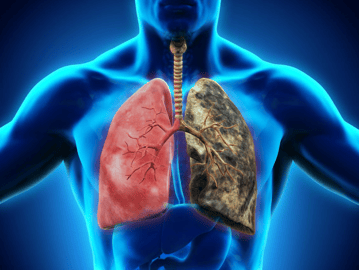 There are two main types of lung cancer: Non-small cell lung cancer and small cell lung cancer. Each has a separate staging system that doctors use to classify how advanced the cancer is.
There are two main types of lung cancer: Non-small cell lung cancer and small cell lung cancer. Each has a separate staging system that doctors use to classify how advanced the cancer is.
The staging of cancer describes how far it has spread through the body and how severe it is. Staging helps healthcare professionals and individuals decide on a suitable course of treatment.
The most basic form of staging is as follows:
- localized, wherein the cancer is within a limited area
- regional, wherein the cancer has spread to nearby tissues or lymph nodes
- distant, wherein the cancer has spread to other parts of the body
Healthcare professionals assess the tumor for size and spread, whether or not it affects the lymph nodes, and whether or not it has spread elsewhere.
There are also specific ways of staging non-small cell and small cell lung cancer.
Stages of Non-Small Cell Lung Cancer
Healthcare professionals typically use tumor size and spread to describe the stages of non-small cell lung cancer, as follows:
- Occult, or hidden: The cancer does not show up on imaging scans, but cancerous cells might appear in the phlegm or mucus.
- Stage 0: There are abnormal cells only in the top layers of cells lining the airways.
- Stage 1: A tumor is present in the lung, but it is 4 centimeters (cm) or under and has not spread to other parts of the body.
- Stage 2: The tumor is 7 cm or under and might have spread to nearby tissues and lymph nodes.
- Stage 3: The cancer has spread to lymph nodes and reached other parts of the lung and surrounding area.
- Stage 4: The cancer has spread to distant body parts, such as the bones or brain.
Stages of Small Cell Lung Cancer
Small cell lung cancer has its own categories. The stages are known as limited and extensive, and they refer to whether the cancer has spread within or outside the lungs.
In the limited stage, the cancer affects only one side of the chest, though it might already be present in some surrounding lymph nodes.
Around one-third of people with this type find out that they have cancer when it is in the limited stage. Healthcare professionals can treat it with radiation therapy as a single area.
In the extensive stage, the cancer has spread beyond the one side of the chest. It may affect the other lung or other parts of the body.
Around two-thirds of people with small cell lung cancer find out that they have it when it is already in the extensive stage.

